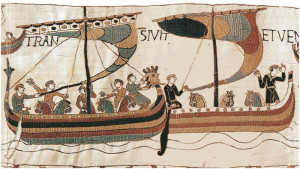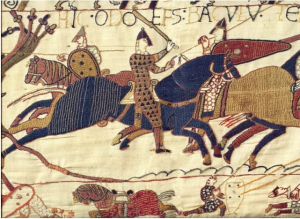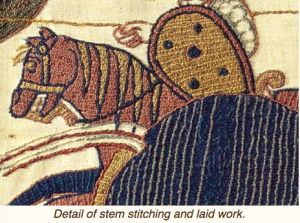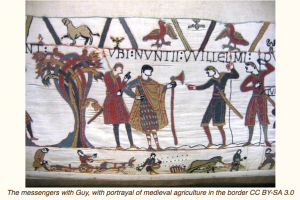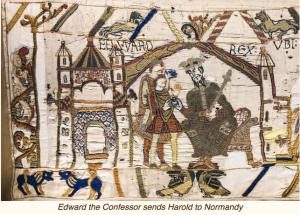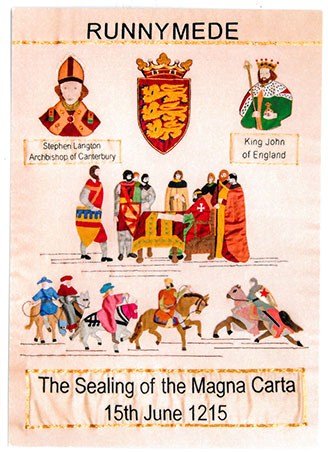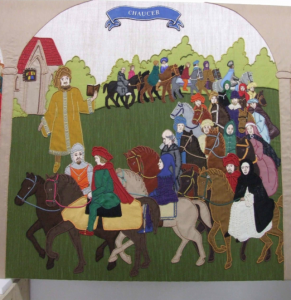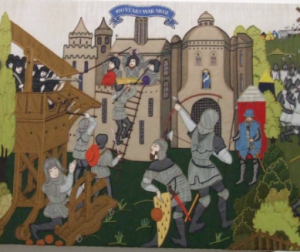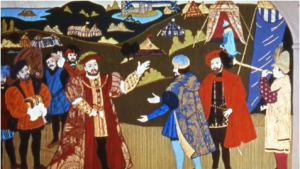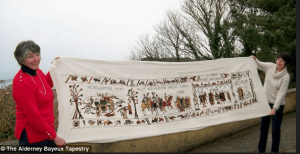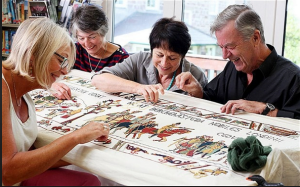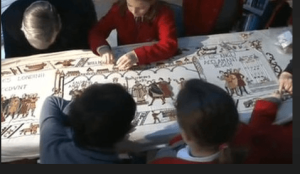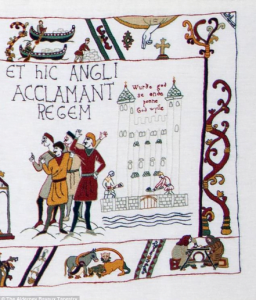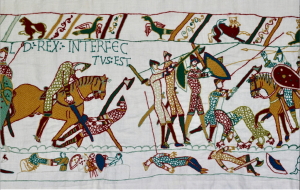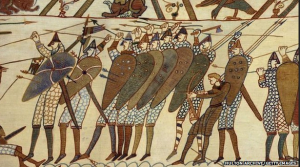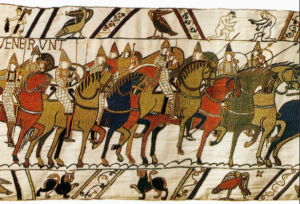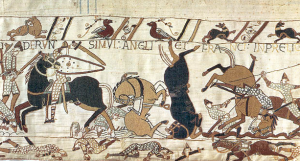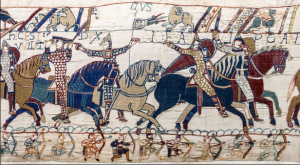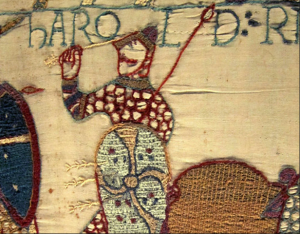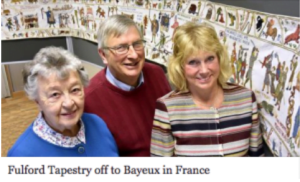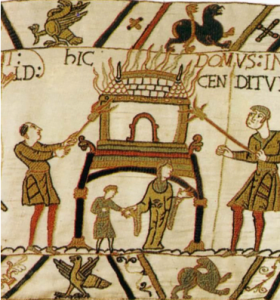My thanks to the multitude of you who read the series of 12 blog entries on Embroideries That Record History. Your response has been most gratifying. Doing the research was both interesting and fun though I find the computer technicalities to be extremely challenging. My thanks to Beth and Alexis without whom I would still be adrift in computerland.
Your comments were also appreciated. To reply to one: what are the books you have written and published all about? I am happy to respond. Yes, I will return to Historical Embroideries, but while research wanders and mellows, here is an introduction to the books that you will find on this site.
The Royal School of Needlework taught us how to stitch with precision and speed. The techniques and design were traditional and we followed black lines printed on fabric. This is essential to stitch a design such as the one pictured below.
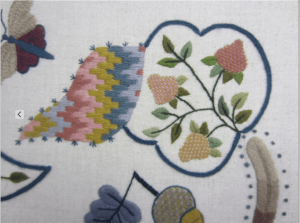 But my books are different!
But my books are different!
They introduce you to freehand, creative stitching. The research is already done and you can enjoy the results.
Many years ago, I had this song on my brain: In an English Country Garden as sung by Nana Mouskouri. I pondered and experimented on how to stitch the flowers in the song using a wider range of stitches than lazy daisy and french knots. I experimented endlessly and from the many attempts to portray recognizable flowers grew the body of knowledge that is contained in my two books,
Hand Stitch Recognizable Spring Flowers and Hand Stitch Recognizable Summer Flowers.
All the stitches used in these books are traditional but are used in non-traditional ways.
Spring Flowers uses only four basic stitches, straight, detached chain, french knots and buttonhole.
Below are Dandelions which were added to our gardens just for fun.
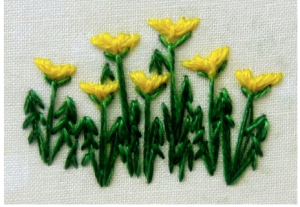
Summer Flowers uses more stitches all of which are well known.
None of this is difficult. The experimenting resulted in simplicity.
What is different is that the stitching is freehand. No black lines to follow and cover so that they do not show up like ring around the collar. Stitching freehand is fun, it is liberating and it is the essence of creativity. Creating something uniquely individual has its own thrill.
But what about a design, you ask? Yes, there is a plan to be made before starting stitching but it does not rely on paper or pencil. Nor is it necessary to be able to draw. It is done with small pieces of coloured fabric or paper that plan the general layout. Photographing and recording this plan is part of the preparation for stitching freehand. I can guarantee that if you put pencil marks on your fabric, you will change your mind and there will be visible lines where you do not want them. With a plan, a concept to start from you can change your mind on specifics later. Changing your mind is all part of the process. Planning the colour layout allows you to start stitching.

This garden was stitched by a student. Look at it closely to note all the different spring flowers included. Count and identify them. I come up with between 10 and 12.
My books also contain technical strategies that I learned at R.S.N. or have gleaned over the years. There are tips for experienced stitchers and tips for beginners. Mounting fabric on a frame that is taut is essential. It makes every stitch easier and the results are far more professional than working on slack fabric that behaves like a trampoline.
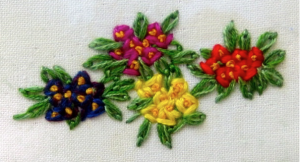
Summer flowers uses photo printed fabric. I have my photos on file and will forward any of them to you for your own personal use. You may already have some suitable ones of your own. Here are Impatience, which bloom in many colours, and Lupins stitched on photo printed cotton fabric.

These books are published in ebook format so that they are affordable for everyone. You can print your personal copy on your printer or download it onto your Ipad or Kindle and have it close by when you are stitching. EBookIt (Archieboy) is a safe and reliable site.
Here are the results of professional training and a lot of experimentation. You will receive the necessary information to be individually creative. You can then create a stitching that is uniquely yours.
Stitching freehand is relevant for contemporary embroidery.
Bravo, Go for it. Venture and discover what you can do when you follow your own ideas.
